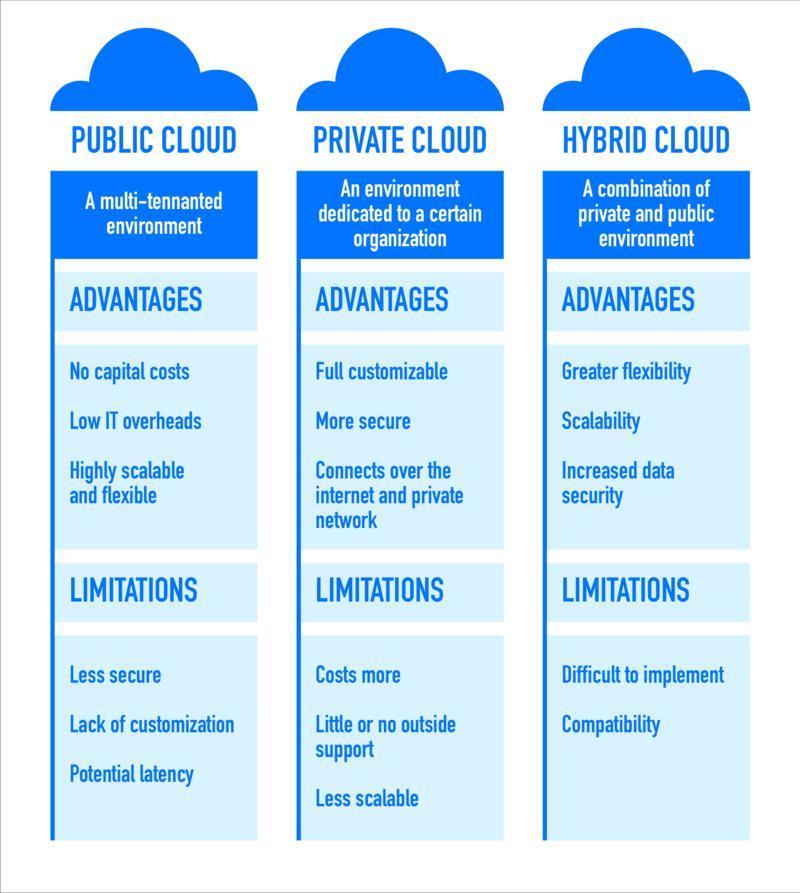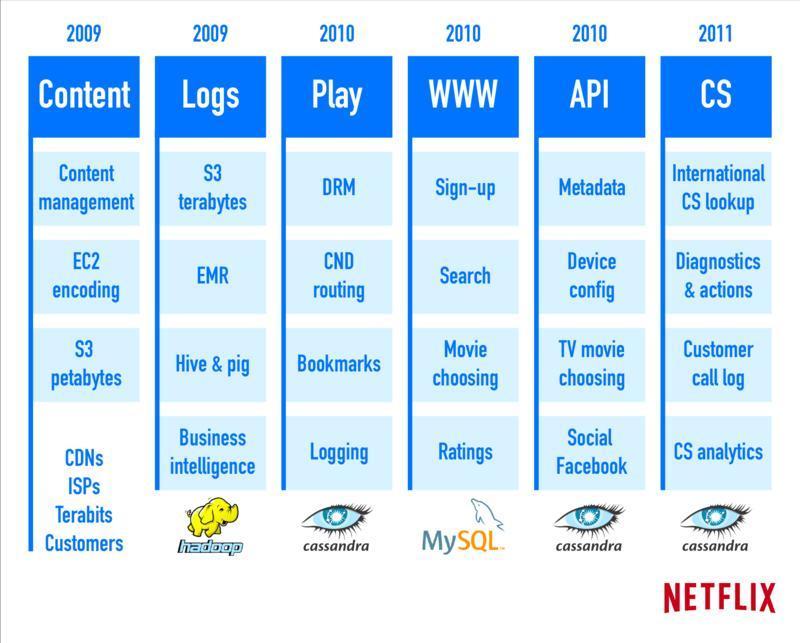Many offices today have switched to remote work, which led to the popularization of cloud technologies. And if you, as a business owner, aren't using them yet, it's high time to change tactics and start doing it.
In our new article, we'll discuss key reasons for cloud migration and outline the best way to approach this process.
What is Cloud Migration?
Migration means the transfer of a company's IT infrastructure to the capacity of a virtual data center owned by one of the third-party cloud hosting providers. IT infrastructure includes various data, any services, applications with their settings, corporate mail, business documentation, customer contacts, etc.
The companies that usually recourse to strategies for cloud migration are the following:
-
organizations whose activities cover several geographic locations;
-
large companies with too complex and multifaceted IT infrastructure;
-
businesses with seasonal surges in purchasing activity. Cloud technologies help them cope with peak loads;
-
companies expecting rapid growth of their customer database. The cloud environment allows scaling the resources used in a more efficient way;
-
SMB representatives or startups with a limited budget. They find it more cost-effective to use cloud solutions;
-
offices working remotely (and there are a lot of them, due to the pandemic).
There are a number of large providers on the market today, including Amazon, Microsoft Azure, Oracle, and others. These companies are responsible for cloud services and guaranteeing their availability, reliability, security, scalability, etc.
Statistics
-
Nearly 95% of business owners use some kind of cloud solution (it is about any use, not just full data transfer). And this figure has increased even more since the start of the pandemic;
-
65+% of companies have a dedicated team of cloud experts, and over 20% of organizations plan to create one;
-
Oracle predicts that 80+% of business applications are likely to migrate to the cloud over the next decade.
Top Reasons for Cloud Migration

The main benefits of the cloud environment and its usage include:
-
Cost savings. You don’t have to buy expensive server hardware and spend money on its maintenance, which leads to cost savings of up to 50%.
-
Flexibility. By saving on hardware, you also gain additional flexibility when scaling your business. Simply put, you can improve your project according to your needs and safely enter new markets.
-
Previously, you could be stopped by the fear your equipment wouldn't cope with peak loads, now this problem is a thing of the past.
-
-
Clear pricing. Your expenses will be logically justified and quite reasonable, you'll pay only for the service received, nothing more.
-
Ease of cloud-based infrastructure maintenance. A few employees are just enough to make the cloud system work at the proper level, whereas before you had to maintain a whole staff of experts.
-
Fast implementation. The cloud migration process takes a minimum of time, which is also a great advantage.
-
24/7 support. You get 24/7 support. Do you have any questions or, God forbid, problems? Contact the specialists anytime, anywhere, and if your choice of provider was correct, you’ll receive help in the very near future.
-
Widespread availability. Access to cloud services is available around the clock. The information is being constantly synchronized and updated, and you have the opportunity to work anywhere in the world at any time using any device.
-
Under quarantine conditions, such availability simplifies the transfer of company employees to remote work.
-
-
Enhanced security. Later in the article, we'll discuss cloud migration security risks and ways to avoid them. And right now, we just say that reliable providers would ensure the protection of your corporate data.
-
Data backup. And speaking of data, let's not forget another advantage of cloud systems, namely, backup. The risk of data loss is less than 1%, which means you'll be able to recover your information if needed.
-
Regularly updated cloud technologies. Again, if you've made the correct provider choice, you'll get a service, which is constantly evolving and being supplemented with new cool features. After all, these companies focus on offering the most innovative solutions.
-
Less risk of service downtime. Of course, no one is immune to such problems, but cloud hosting providers do their best to solve them as quickly as possible. Among others, they invest a lot of money and effort into increasing the fault tolerance of their equipment. Because let’s face it, they're interested in ensuring that client resources work smoothly and without interruptions.
Types of Clouds

-
Public clouds. The meaning, we think, is clear: these cloud systems are being delivered to a large number of users, and your company is one of many.
-
You should choose a public cloud if your main goal is business management flexibility and task automation;
-
-
Private clouds. If the first option doesn't suit you, you can create your own cloud-based infrastructure. This isn't a cheap way to go, but, in some cases, the game is worth the candle.
-
Choose a cloud migration strategy of the private type if you own a large business with complex IT infrastructure or deal with highly sensitive data.
-
-
Hybrid cloud environment. The third option is a compromise and lies in the fact that you serve the bulk of your resources on your own, and a third-party data center is just а supporting one. Its task is to allow expanding and developing your business with greater comfort and less risk.
-
Imagine your app or website has had an unexpected success, and it resulted in the influx of a large number of new customers. Of course, you must be prepared to handle peak loads. In theory, a public cloud could help you... but what if you're working with extremely delicate data that you don't want to risk? Then you had better resort to a hybrid model when you yourself choose the components to exist in the public cloud.
-
3 Basic Cloud Migration Types
-
Local data storage is becoming cloud-based. It's about moving data stored locally to the cloud. The benefits of such data movement have been explained earlier in the section devoted to the top reasons for cloud migration.
-
Reverse migration. Sometimes it becomes necessary to do the opposite of the above and move the cloud-stored data to the on-premises environment. The need to migrate to the cloud is clear, but why move data back? Reasons may include wanting more control over corporate digital infrastructure and the like.
-
Сloud-to-cloud transfer. The last item on our list is migration from one cloud provider to another (if the latter offers more favorable cooperation terms).
We've figured out the backbone of the issue, now it's time to get into the details. And above all, we have to discuss a plan for migrating to the cloud (or rather, a cloud migration strategy).
Key Strategies for Cloud Migration
-
Full migration, when you move all your infrastructure to the provider. In return, you get special terminal stations to access your services.
-
Prepare to find some time (at least a few days) to perform a full migration.
-
-
Partial migration. Basically, this is a variation of the hybrid model we mentioned earlier. To be precise, you transfer only a part of your systems to the cloud, a share of your IT infrastructure remains at your facilities.
-
Usually, partial migration is needed as testing of chosen cloud technologies, a kind of initial stage of a full-fledged migration of all your resources.
-
-
Optimization-enhanced migration. In this case, you're not only migrating your systems to the cloud but also transforming and optimizing them to be able to take full advantage of the cloud-based infrastructure.
So, there are three basic migration strategies; which one to choose in your particular case?
Firstly, let's say that optimizing resources when migrating them is always a good idea. But what about full and partial IT infrastructure transfer? What is better and why?
-
If you are a small or medium business owner, you can safely choose a full data migration.
-
If your company is large and complex in its infrastructure, the best option is to use the principle of cautious gradation, so to say. Act by phases, don't move all your data at once (to be precise, select a partial migration model).
Rules for the Successful Use of Cloud Migration Software
-
Maintaining business continuity. You should maximize seamless data migration to minimize or even prevent downtime.
-
Meeting your expectations. You shouldn't migrate to the cloud out of a blind desire to follow a newfangled trend. To achieve great results, you must analyze your business situation and determine what your company needs, to begin with.
-
Starting small. Take your time and act gradually if you’re not 100% sure you have made the right decision.
-
Paying attention to licensing. Before initiating the cloud migration process, you must carefully review the proposed cooperation terms and make sure they meet your goals.
-
Considered automation. You should automate the migration process whenever possible. Your task is to simplify and optimize your business, to make management of the company easier, and not vice versa.
-
There're many cloud migration tools to help you with this, such as the Amazon Server Migration Service (and others of the same sort).
-
-
Monitoring and analytics. You must constantly monitor the progress of your resources hosted in the cloud, which means you need special statistics and analytics services (including Google Cloud Monitoring, Amazon CloudWatch, and Azure Monitor).
Possible Cloud Migration Problems
To migrate to the cloud smoothly and without any problems, avoid common mistakes such as:
-
No diagram of dependencies between services. Here's an example to help you understand why it is important to have a dependency diagram. Let's say you have a couple of services, which use the same database. If you move them individually, problems are inevitable. Do you agree with us?
-
No plan for migrating to the cloud (the so-called roadmap). You must have a clear plan of action (which might include foregoing dependency diagrams, by the way). Describe what, when, in what sequence you are going to do in order to make your digital infrastructure cloud-based.
-
No preliminary testing. Of course, testing cloud migration software of your choice won't hurt either (even if you're convinced you've picked the best possible solution).
-
Total binding of services to a specific provider. Make sure you can change cloud hosting providers as needed (i.e. carry out cloud-to-cloud transfer).
-
Unplanned system downtime. Of course, ideally, migration is absolutely seamless, it shouldn't interfere with business processes. But it would be a big mistake to rely on pure luck. So plan the whole thing wisely.
-
By the by, why not choose the period of least business activity?
-
All about Cloud Migration Security
The question that worries many is this one: how to avoid cloud migration security risks? Here are three tips to help you solve the problem:
-
Choose providers carefully. Renowned providers do their utmost to protect customers' data; among other things, they're constantly working to improve technology. So you shouldn't skimp on cloud services.
-
Consider a private cloud. If you're still worried about your users' data, go for the private cloud model. It is more expensive, but your peace of mind is worth the money, right?
-
Pay attention to employee training. As studies show, many security problems are caused by the unpreparedness of the business owner's staff. In particular, employees don’t always receive proper instructions on time. Don't leave things to chance.
Detailing the Cloud Migration Process
-
Inventory and initial audit. You need to start by analyzing your IT infrastructure and establishing dependencies between its core elements. As a bonus of some sort, you'll be able to discover the tricky parts of your system. These are the ones you'll have to pay more attention to when migrating, so you had better know about them in advance (in order to get properly prepared).
-
Strategizing. In the second step, you should turn your preliminary analysis into a clear plan. We described several migration strategies earlier in the article, you can choose one of them or come up with your own idea.
-
KPI selection. KPIs will be useful to you in the future as indicators of the success and effectiveness of the selected solutions.
-
Choice of your cloud model (public, private or hybrid cloud). It all depends on the size of your company, the confidentiality of the data being processed, and the budget.
-
Choosing a cloud provider. This is one of the key stages, and it should be approached very responsibly. The most important thing is to make sure the company provider has a strong infrastructure, invests in cloud technologies (to be specific, in their development), and offers the services you need. Also, your provider must be held in high repute.
-
We advise you to conclude an SLA. It’ll facilitate communication with the company team in the future.
-
There are a lot of provider options, the most popular are GCP, AWS, Azure.
-
-
Drawing up a roadmap. It's about a plan for migrating to the cloud. You must detail the sequence of your actions, as well as determine each task's deadline. And don't forget to pick a convenient time to migrate each service on your system (the most critical ones are best transferred at night).
-
Choice of cloud migration tools. We can name such solutions as AWS Server Migration Service, Azure Migrate, Google Migrate (Compute Engine). However, it'd be better if your infrastructure is analyzed by experts. They'll be able to give their professional recommendation with the specifics of your business in mind.
-
Test migration. We've already explained why you should test the chosen solutions. So request test access to the cloud and work out the migration scheme using simple services. This way, you'll get a chance to avoid a host of problems, which would almost certainly happen otherwise.
-
Moving infrastructure to the cloud. And only now that all these steps have been taken, you can start the actual cloud migration process. Be vigilant and stick to your strategy (that's why you created it in the first place, right?).
-
Checking the system in a new environment. That's all, the hard work is over, and it remains to check the performance of your system. And if everything has been done according to the plan, there shouldn't be any unpleasant surprises.
Migration examples
Let's start with an abstract example. Suppose the management of a certain bank plans to use the cloud infrastructure. The migration will consist of the following steps:
-
audit of the entire infrastructure;
-
choice of a data storage model (the bank might probably select a hybrid one in order to store part of the data using its own capacities);
-
selection of a cloud provider (the company has to operate in the legal field of the country where the bank works);
-
drawing up a cloud migration strategy. The transfer of non-critical information to the cloud is likely to be phased;
-
migration and testing of services in new conditions.
Now we’d like to give a real-life example and discuss the popular Netflix streaming service. You've probably heard about this company, which allows its users to watch online movies, TV series, and stuff like that.
It might surprise you, but Netflix didn't immediately adopt the cloud storage model. But the time had come when the owners of the service decided to change the on-premise environment to the cloud-based infrastructure. They made a detailed plan and got down to business.
The whole cloud migration process took several years, which isn’t too much considering the business concept had to be completely revised.

Acting in stages, Netflix managed to transfer video broadcasting services, payment and billing systems, customer data control panels, and more from local servers to a cloud-based environment.
Conclusion
Alas, you cannot migrate to the cloud without the help of experienced professionals (at least successfully). If your company doesn't have a specially dedicated department, hire an external team to assist you.
Why not choose us? Our Agilie company offers:
-
full audit of your business IT infrastructure;
-
drawing up a migration plan taking into account your specific situation;
-
supervising the cloud migration process and testing the results;
-
infrastructure optimization, if necessary (based on test results);
-
follow-up technical support.

